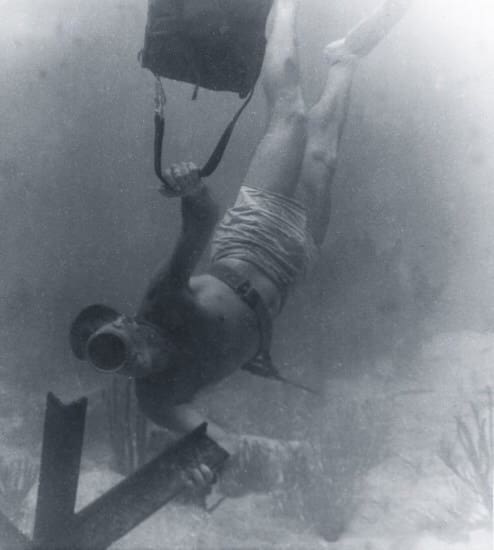When you are doing a lot of diving, or you dive for the first time in new fin or a new dive shoe/ boots, you might tend to rub raw spot on the tops of your ankles, the backs of your heels or even on your toes. If you don’t have the option and you have to dive for whatever reason, say you are in the middle of your work up, or you are overseas and as part of your job you have to dive.

Prevent Blisters
There are different types of socks for diving, neoprene, lycra, and the good old fashion wool dive socks, to help keep your feet warm and also protect from blisters. You can also try and wear everyday athletic socks. Wearing socks under your dive boots stop the booties from rubbing against your skin. Instead of rubbing against your ankles and heels, the boots rub against the socks. Socks also make donning and doffing your wetsuit easier. This is a good bonus for wearing socks. Even if your dive boots fit you perfectly, they still may rub your foot raw, if you dive enough or you get sand in your booties when you go thru the surf to get sand in your bootie. Wearing socks can help prevent some of these problems.
First, I am not a doctor, so take all of this as you will. I know there are 100s of ways to do this. This is what I have done in the past, and it worked for me
Treating Blisters
The key to preventing blisters is to eliminate friction. Shoes and boots should be well broken in, and you should make an effort to keep your socks as dry as possible by changing them when your feet get hot and sweaty or by taking your shoes or boots off periodically to let your feet and socks dry out when you take a snack break. That is how it is done on land, but in the water, you will be wet. So you will need to try and keep sand out of your booties as much as possible. If you are diving something new. Start with a short duration dive so you can break it in.
So there are basically two ways to treat a blister. First is to leave it alone and not pop it and treat by keeping it intact and basically leave it alone, time will heal it. Drain it if needed. Second is to pop the blister. Once it is popped the best thing to do is treat it with Tincture of Benzoin. This will hurt, but it will help dry it out faster. Cover it with something the same way you usually would. Most people say to cut the center out of a bandage, so it looks like a donut and put it around it. Then put another one on top of the first one. This is to help stop the bandage from sticking to it. This can also be done with duck/riggers tape. Once a blister has been broken, it should be cleaned, disinfected, and then bandaged. Before bandaging the wound, an antibiotic ointment should be applied. Research has shown that the application of Neosporin or triple antibiotic gel will help kill off infecting bacteria after two applications and accelerate the healing process.
Unbroken blisters that are painful should be drained. This is caused by the build-up of fluid in the blister, so removing it will help relieve the pain. First, disinfect the area. Prick with a clean sterilized needle. Leave the skin overlying the blister in place to prevent infection. Apply antibiotic gel to the site of the needle pricks and cover with a bandage. After your dive replace the dressing at some point. You can let it dry out overnight if you want.
Tincture of Benzoin on a q-tip is a bonding agent that can also be used to seal the roof of the blister to the exposed skin underneath. It already contains alcohol, so a separate application is unnecessary. It will hurt, but it will help dry it out, and it should heel faster.


Tincture of Benzoin – It will hurt. Haha that’s an understatement! Man that stuff if like getting stuck with a hot poker, but boy does it work!